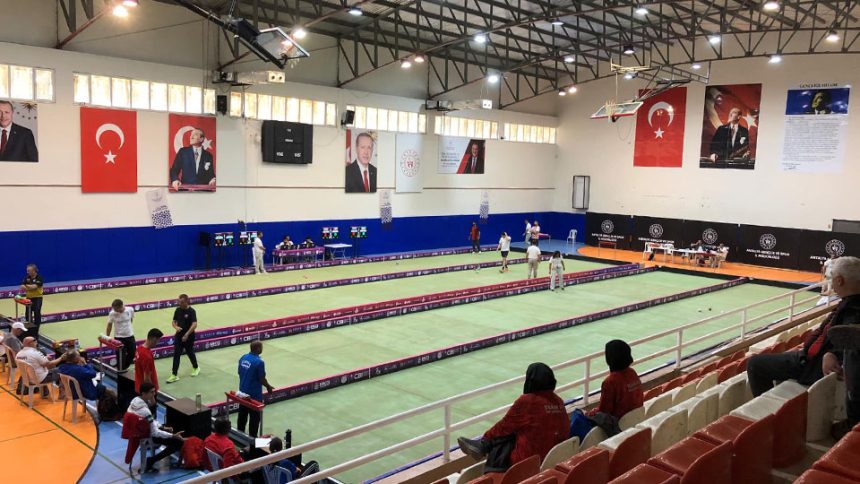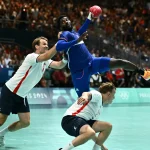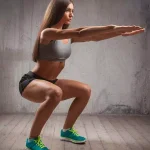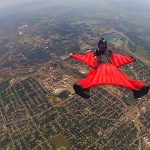Raffa, also known as Raffa bocce or roundup, is a variant of bocce, which falls under the broader category of boules sports. It originated as a traditional Italian game but has evolved into an international competitive discipline. In Raffa, players use synthetic (resin or plastic) colored balls, typically played on a smooth, flat rectangular court made of sand, carpet, or synthetic material (around 26-28 meters long and 4-4.5 meters wide). The objective is to roll or throw your balls as close as possible to a small target ball called the pallino (or jack), while also strategically displacing opponents’ balls through “raffa” shots (hitting or spocking). Games can be played individually, in doubles, or triples, with scoring based on proximity to the pallino—teams earn points for each ball closer than the opponent’s nearest ball, usually playing to 12 or 15 points.
Unlike other bocce variants like Volo (which involves lofting balls) or Pétanque (played on gravel with metal balls), Raffa emphasizes a mix of precision pointing (gentle rolls) and aggressive hitting, making it dynamic and tactical. It’s governed internationally by the Confederazione Boccistica Internazionale (CBI), and nationally by organizations like Bocce Australia or the United States Bocce Federation (USBF).
Raffa, as part of bocce, is one of the most accessible and widely played sports worldwide, often cited as the third-most participated sport globally after soccer and golf.hilltopmonitor.jewell.edu Its popularity stems from several key factors:
- Inclusivity and Accessibility: It can be played by people of all ages, genders, and abilities—including children, seniors, and those with disabilities. No advanced athleticism is required to start, making it ideal for casual play or Special Olympics programs, where it has seen significant growth.
- Social and Community Appeal: Often played in social settings like parks, clubs, or family gatherings, it fosters camaraderie. In Italian diaspora communities (e.g., in the US, Australia, South America), it’s a cultural staple that builds social bonds.
- Low Cost and Simplicity: Equipment is affordable (a basic set costs $50-200), and it can be played on various surfaces without needing expensive facilities. Rules are straightforward, allowing quick pickup.
- Global Reach and Growth: Played in over 70 countries across Europe, the Americas, Asia, Africa, and Oceania, with federations in places like Italy, the US, Australia, China, and Brazil. Social media exposure, especially in the US and Asia-Oceania, has sparked a surge in interest, turning it into a “global phenomenon.” Competitive aspects attract serious athletes, while its inclusion in multisport events boosts visibility.
- Health Benefits: It promotes light physical activity (balance, coordination, strategy) and mental sharpness, appealing to an aging population and wellness trends.
In the global sports market, Raffa’s niche but steady growth contrasts with high-impact sports; its market includes equipment sales, court construction, and tourism around tournaments, with increasing professionalization in countries like Italy and the US.
Important Raffa Global Events
Raffa features in numerous international competitions under CBI and regional federations. These events include singles, doubles, triples, and precision shooting, often divided by age (juniors, seniors) and gender. Here’s a table of key ongoing or upcoming major events based on recent calendars:
| Event Name | Location | Date (Recent/Upcoming) | Details |
|---|---|---|---|
| World Juniors Bocce Championship | Bretagne, France | October 27 – November 2, 2025 | Youth-focused (under-18/23), includes Raffa disciplines; attracts teams from 20+ countries. |
| European Seniors Bocce Championship | Chiasso, Switzerland | September 1-6, 2025 | For athletes 55+, emphasizing Raffa; major European qualifier. |
| Asia Oceania Bocce Championships | Kota Bharu Kelantan, Malaysia | December 7-12, 2024 | Regional event with growing participation from Asia and Oceania; includes juniors and seniors |
| PanAmerican Juniors Bocce Championship | Parana, Brazil | June 25-29, 2025 | Americas-focused for youth; promotes Raffa in South America. |
| North American Bocce Cup (Punto Raffa Volo) | Various (e.g., Boston, US) | Annual (e.g., 2024 in Methuen) | Combines Punto (pointing), Raffa (hitting), and Volo; international teams from US, Canada, etc. |
| World Seniors Bocce Championship | Varies (e.g., recent in Mersin, Turkey) | Biennial | Flagship event with global teams; includes precision throwing. |
| Australian Raffa Open Championships | Morwell, Australia | Annual (e.g., March 23-24, 2024) | National open with international invites; showcases elite play. |
These events often serve as qualifiers for larger multisport games, like the Mediterranean Games or potential Olympic inclusion efforts for boules sports.
How Does an Athlete (Young or Old) Get Started in Raffa and Become a Great Player?
Raffa is beginner-friendly, with no age barriers—young kids can start for fun and coordination development, while older adults enjoy it for low-impact exercise and socialization.
Getting Started:
- Learn the Basics: Understand rules—toss the pallino (target ball) down the court, then alternate throwing bocce balls (4 per player/team). Aim to get closer than opponents or hit their balls away. Practice on any flat surface (grass, beach, or court).
- Get Equipment: Buy a beginner set (8 balls + pallino) for $50-100. For Raffa, opt for synthetic balls (107-113mm diameter).
- Find a Place to Play: Join a local club via national federations (e.g., USBF in US, Bocce Australia). Many parks have free courts; start with friends or family
- Take Lessons: Watch tutorials or join beginner clinics. For young players, junior programs focus on fun; for older, adaptive versions (e.g., seated or ramp bocce)
- Play Regularly: Start casual (1-2 hours/week), then join leagues for competition.
Becoming a Great Athlete:
- Build Skills: Master pointing (accuracy), Raffa hitting (power/control), and strategy (e.g., blocking, banking off walls).media.specialolympics.org Practice daily, analyze games.
- Join Competitions: Enter local tournaments, then nationals (e.g., Australian Open). Aim for international via CBI qualifiers.
- Train Holistically: Combine physical (strength, agility), technical (drills), and mental (focus under pressure) training. Young athletes benefit from talent ID programs; older from experience.
- Professional Path: While not highly paid, top players compete full-time in Italy/Europe, with sponsorships. Join federations for coaching/certification; some earn through teaching or events. Dedication (years of practice) and anthropometric traits (e.g., coordination) help predict success.
Training Plan for a Raffa Athlete
Here’s a sample 8-week progressive training plan for an intermediate athlete (adapt for beginners by reducing intensity; young/old can shorten sessions or focus on fun). Train 3-5 days/week, 1-2 hours/session. Include rest days, proper nutrition, and hydration. Consult a coach for personalization.
Weekly Structure:
- Warm-Up (10-15 min): Light jogging, arm circles, dynamic stretches for shoulders/hips.
- Technical Drills (30-45 min): Focus on skills.
- Physical Conditioning (20-30 min): Build strength/endurance.
- Game Simulation (20 min): Practice matches.
- Cool-Down (10 min): Stretching, reflection.
8-Week Plan Overview:
| Week | Focus | Key Drills | Conditioning | Notes |
|---|---|---|---|---|
| 1-2 (Foundation) | Basics & Accuracy | Pointing: Roll 20 balls to pallino at 10-15m. Hitting: Basic raffa shots at stationary targets. | Bodyweight exercises (squats, planks 3x30s). Walk/jog 10 min. | Emphasize form; 3 sessions/week. Track distance accuracy. |
| 3-4 (Skill Building) | Power & Strategy | Banking: Practice rebound shots off walls. Combo: Alternate pointing/hitting in sequences. Precision throwing: Aim at small zones. | Core work (crunches 3×20), light weights for arms (dumbbell curls 3×10). Agility drills (ladder runs). | Add mental focus: Visualize shots. Play simulated games vs. self. |
| 5-6 (Advanced Tactics) | Speed & Competition | Vary distances: Throw from 5-25m. Opponent simulation: Set up “enemy” balls to displace. Life kinetic exercises (balance/coordination drills). | Cardio (interval running 20 min), strength (push-ups 3×15). Flexibility yoga. | Incorporate tech (apps for tracking) or video analysis. Compete in local games. |
| 7-8 (Peak Performance) | Endurance & Refinement | Full matches: Play to 15 points. Psychological training: Breathing for pressure shots. Multi-objective drills (mix all skills). | Full-body circuit (jumps, rows 4×12). Recovery focus (foam rolling). | Evaluate progress; aim for tournament entry. Adjust for age: Reduce reps for older athletes. |
Progress by increasing reps/distances weekly. For elite levels, add physiological monitoring (e.g., heart rate) and specialized coaching. Young athletes: Emphasize fun/games; older: Focus on low-impact variants.












